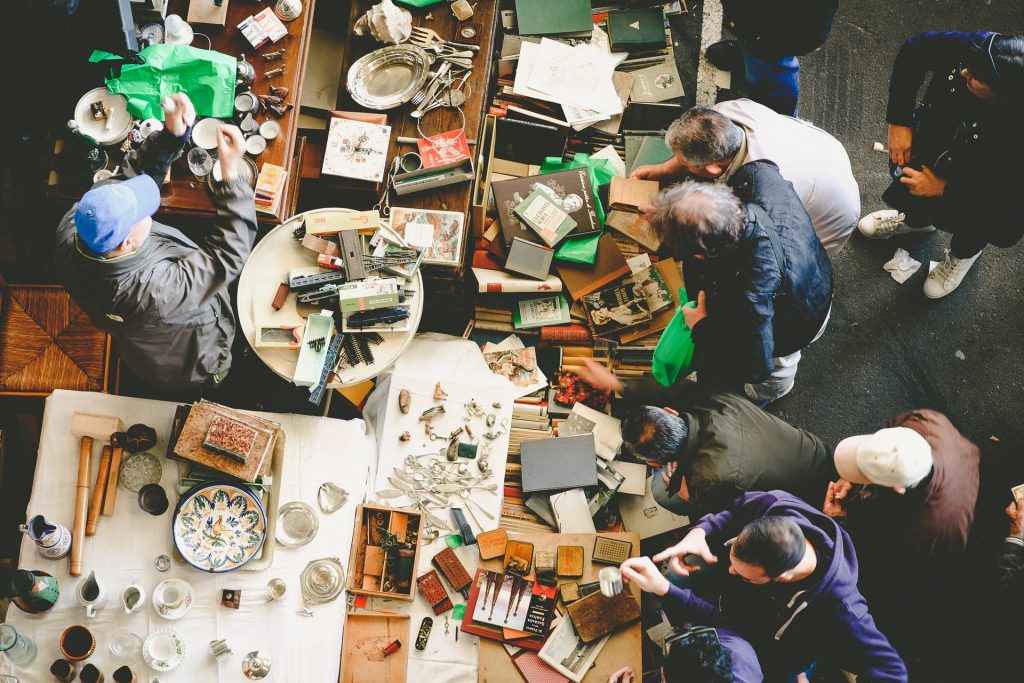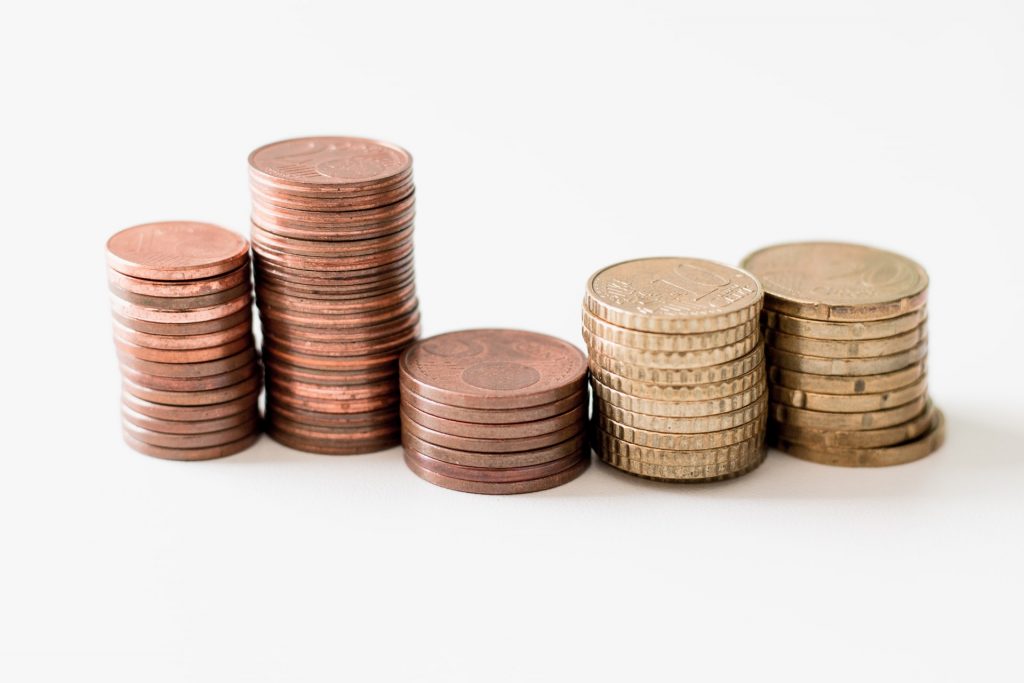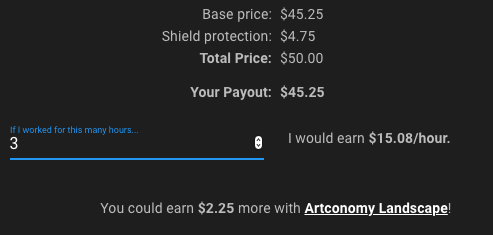If there is one question we’ve gotten more than any in our Discord community, it’s ‘How do I price my commissions?’
The question’s a tough one that every artist faces. So what goes into a price?
We have 7 tips to help you price your commissions.
(Featured image credit Alvaro Reyes via Unsplash)
1. Listen to How you Feel About the Time you Spend
If you’re in this for the long haul (and we hope you are!) you’ll need to learn how to listen to the voice inside yourself while you work.
Your emotions will often know before you will that your pricing is off. Here’s what Psychoseby had to say:
With time you’ll find that certain commission types are too much hassle for you, or that maybe you spent waaaaaaay too long on that one piece.
I’ve found that when I’m working on a piece, and it starts to become more of a chore than something I’m enjoying, it means I’m proooooobably undercharging for that piece.
–Psychoseby

You never want your art to become something you resent.
A sure fire way to get burned out is to create to the point of exhaustion and still not feel you’re in a better position than when you started.
Still need help figuring out pricing? Have tips for others on how to value their time and work?
Come join us on Discord! We’d love to hear from you.
2. Keep Track of Your Expenses
OK. So you have your hourly rate, but do you know what how much you need?
Without an understanding of what your expenses are, you won’t know what price you should target, and where you need to be.
Working with money can be frustrating and frightening to start.
As you spend more time on it and come to understand how your time translates into cash, and how your money is spent, you’ll get a better vision of how it works.
Creating a budget and tracking your spending can help reduce anxiety by informing you on whether you’re taking in enough, and allow you to make important decisions that you’d otherwise be too paralyzed to make.

One benefit of tracking your expenses is the ability to review and see if you can cut them.
You may be able to get by on lower plans for your utilities, or if you’ve been spending your free time retro gaming instead of watching Netflix, you might put your subscription on hold until you’re ready to start up again.
Tax Incentives
A less obvious benefit is that if you’re tracking your expenses, you can write off the business use of your internet connection or cell phone, your art supplies, and trips to conventions, reducing the amount you have to pay at the year’s end.
Check with an accountant to see what you might be able to save. Some even offer free consultations!

That means that tracking your money pays you. It’s free money– money you already have and you’re finding ways to keep. But you can only do it if you take the plunge, and keep steady asking yourself difficult questions about how you’re spending.
And then, if you still find you’re not making enough for ends to meet, you won’t wonder– you’ll know. And you’ll know just how much more you’ll need to bring in to fix the situation.
If you find that, after cutting expenses, budgeting, and writing off your expenses, you can live on $25/hour instead of $30 or $40, you’ll be able to make your art self-sustaining much faster.
Pay special attention to hidden costs: You will need to arrange for your own medical insurance and your own retirement savings.
You may be able to save on these if you have a partner whose employer offers these services, but if not, you will need to find a way to pay for them yourself.
Make sure to factor that into your hourly rate! Don’t forget to factor in time off as well– no one is built to keep working without breaks.
3. Choose Sustainable Prices from the Start
Making a living off of your art requires building an audience and developing your style.
What if you’re still in the early stages of both and can’t manage to bring in work consistently enough to meet expenses?

It might be tempting to sell art at low prices to ‘get yourself out there’, but that is its own trap.
Advice from GoldenDruid:
If you have never taken commissions before and you don’t have much of a fanbase, getting any kind of work for fair pay is going to be difficult because you don’t have enough eyes on your work yet.
I still don’t recommend undercharging in this situation. It just ends up draining you and sends out this beacon to the worst commissioners “I’M A BARGAIN BIN ARTIST!”
It’s really hard to climb out of that stereotype when you finally decide to start taking yourself seriously as an artist. And that’s no way to start off a business. Not to mention low ball pricing hurts your fellow artists who are just starting out.
They see what you’re pricing your work at and think it’s the norm. It’s a vicious cycle that not only hurts new artists, but gives commissioners a skewed perspective of what it takes to keep a freelance art business afloat financially long term.
Instead of going down this route, I recommend focusing on doing your best work and putting in the time to grow as an artist. Build up your audience.
When people start ASKING you for commissions, then that’s your cue to start offering them.
– Golden Druid (@GoldenDruid on Twitter)
It’s OK to keep a ‘normal job’ until you get your bearings, leaning on it for a stable income until your audience is big enough to support you (and here’s 7 tips for making art your side hustle!)
There is no shortcut to building a community around your art, so if you’re going to put in the legwork, you’ll want to do it in the most sustainable way possible.
In the meantime, keep posting your work to your galleries and social media.
4. Listen to Informed Voices on Your Work
You’ll hear a lot of advice from others about pricing. Determining who can give you good advice will become an important part of your decision making process.
Find established artists you admire who have been living off of their work for a while.
These people know what they’re doing– they’ve been where you are. They can give you feedback on your work and your pricing.
Another place you may find pricing advice can be your own customers.
Pay special attention to ones who have commissioned you previously and commission often. Frequent art customers have a good idea of the market value of artists they commission.
They will occasionally find a steal they can’t pass up– and it may be you. See if you’ve encountered this situation:
- A commissioner comes to you and asks to buy a commission.
- They pay on time, are friendly, and don’t give you any trouble.
- Right after you’ve completed the piece, they tell you that you should up your prices.

That commissioner is right. They were excited to find good quality work for less than they expected to pay. They didn’t want to miss out on your pricing before you realized you could go higher— but they’d feel uncomfortable if they didn’t tell you that you were undervaluing yourself.
Take their advice and bump your prices!
Watch What They Do
Likewise, your audience may tell you to change your prices not by their words but by their actions.
If your commissions sell out within minutes of you posting an opening, your prices are too low.
Commissioners should have to take at least a few moments pause to consider your price.
Conversely, if you’ve cultivated an audience that is looking at your art but not yet buying, your prices may be higher than they are willing to pay.
You may need to lower them (so long as you can do so sustainably– more on that in the next section) or else spend more time refining your style.
5. Your Pricing Advertises Value More than Cost
If you sell a commission to someone for $50, that commission is not worth $50 to them.
It’s worth more than $50, or else they wouldn’t trade $50 for it. Likewise, the time you spent on the commission should not be worth $50 to you.
$50 should be worth more than the time you spent, or else it’s not a good trade. In a good trade, both parties are better off than before.

When you underprice yourself you signal what you believe your is worth to others.
Not only will you have more trouble making ends meet, but you are more likely to attract clients who don’t value your time and may take advantage of you.
If your clients frequently lean on you and ask for revisions beyond what you specify in your terms of service, you may be underpricing yourself and advertising to others that your time is not valuable.
Try bumping your prices and make sure to say ‘no’ to extra work beyond what you agreed to do.
6. Hone Your Style to Improve Your Speed
Your style gives life and personality to your work. It also provides you with a toolkit for solving artistic problems. How do you approach rendering something new?
As your style develops, you’ll be able to break down artistic tasks into pieces.
These pieces can be filled in with muscle memory and intuition that comes from developing your craft.
A consistent method for drawing hands, eyes, and other details is key.
This is essential for creating a sustainable business out of your art.
As you are more practiced, you can complete works faster.
Remember your hourly rate? The obvious way to increase it is to increase your prices– and sometimes you should!
But another way to increase it is to increase your delivery speed, and honing your style helps with that.

A $35 sketch that takes all day is $4.37 dollars an hour.
A $35 sketch that takes an hour is $35 dollars an hour.
Don’t get too obsessed with the perfection of the piece.
A work of art is never finished, only abandoned.
-Paul Valéry, paraphrased
You can always do more to improve a piece. The real key is knowing when to set it down and deliver it.
If you’re not happy with how a particular piece turned out, don’t show that to the client.
Your client takes cues on how to value the work from you. Show your excitement about the parts you did well, and your client will be excited, too!
Later, take some time to do a study at your next opportunity. Work on the elements you want to do better– then you’ll have your skill ready for the next piece!
7. Keep Track of Your Time
It can be easy to get carried away when working on a piece. Especially if there’s a part of it you want to go over again and again, trying to get it just right.
When you’re working for yourself as an artist, no one is giving you performance reviews, telling you how many pieces to complete in a day or a week, or scheduling your working hours.
You have to organize yourself, and the fundamental aspect of self organization is understanding how you spend your time.

Think of it– at most jobs, you get paid by the hour, and even if you don’t charge your commission work by the hour, you still have an effective hourly rate.
Figuring out your rate
Don’t know what your hourly rate is? It’s the price you sell a commission at, divided by the number of hours you worked on it.
If you sell a full color commission that takes you a full work day (8 hours) to complete for $25, you’d make an hourly rate of $3.12.
If you wanted to make the US federal minimum wage on a single piece worked over a single day, you’d need to charge $58 for that piece.

To get a more accurate picture, you should also factor in time spent on peripheral tasks leading up to this commission, such as marketing.
If you spent an hour a week on marketing and had three commissions that week, divide that hour into three to count it to each commission separately.
You also need to consider other costs (more on that later).
Your effective hourly rate is essential to making it as an artist. It is the most important thing to bear in mind when pricing yourself. So, how can it be increased?


